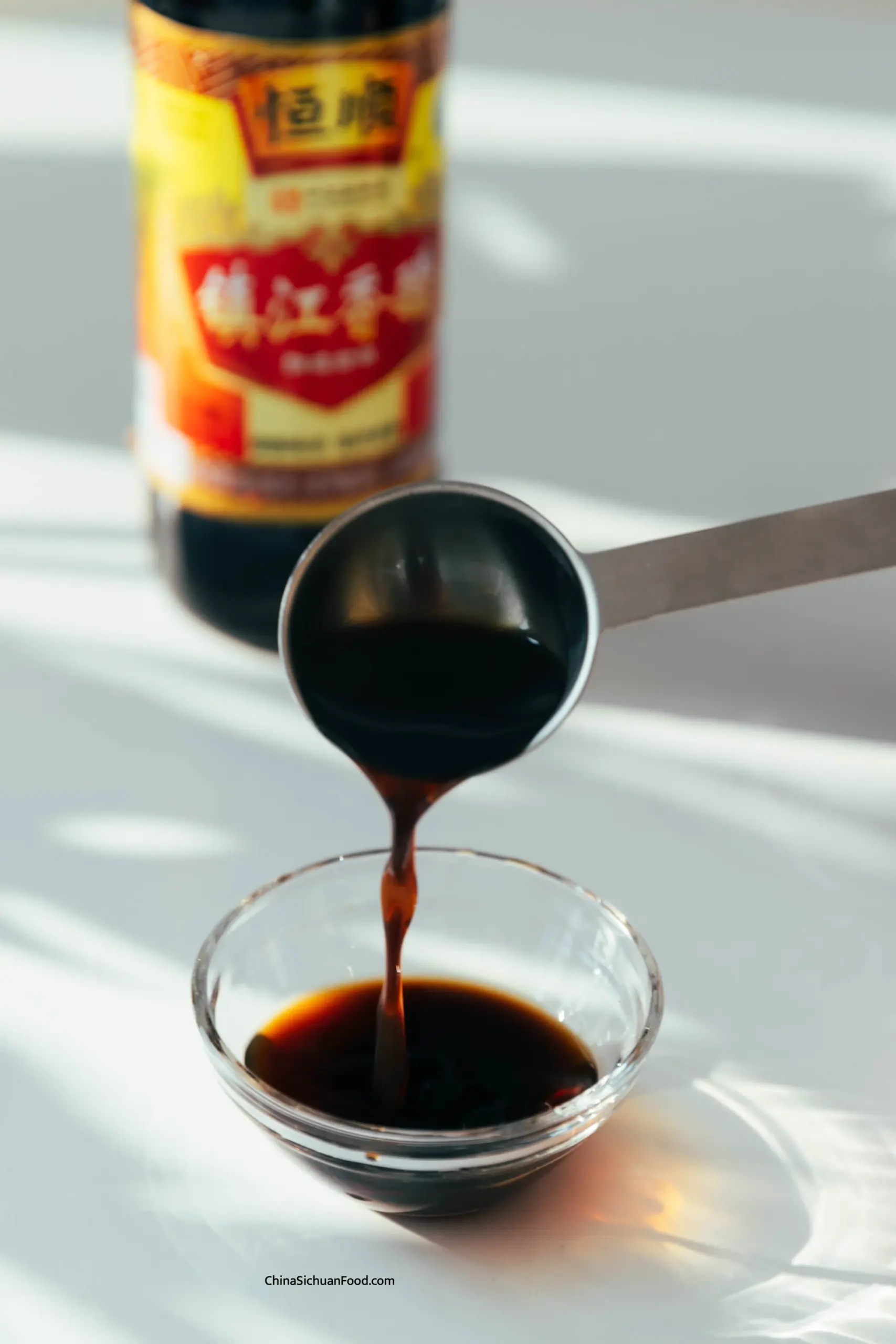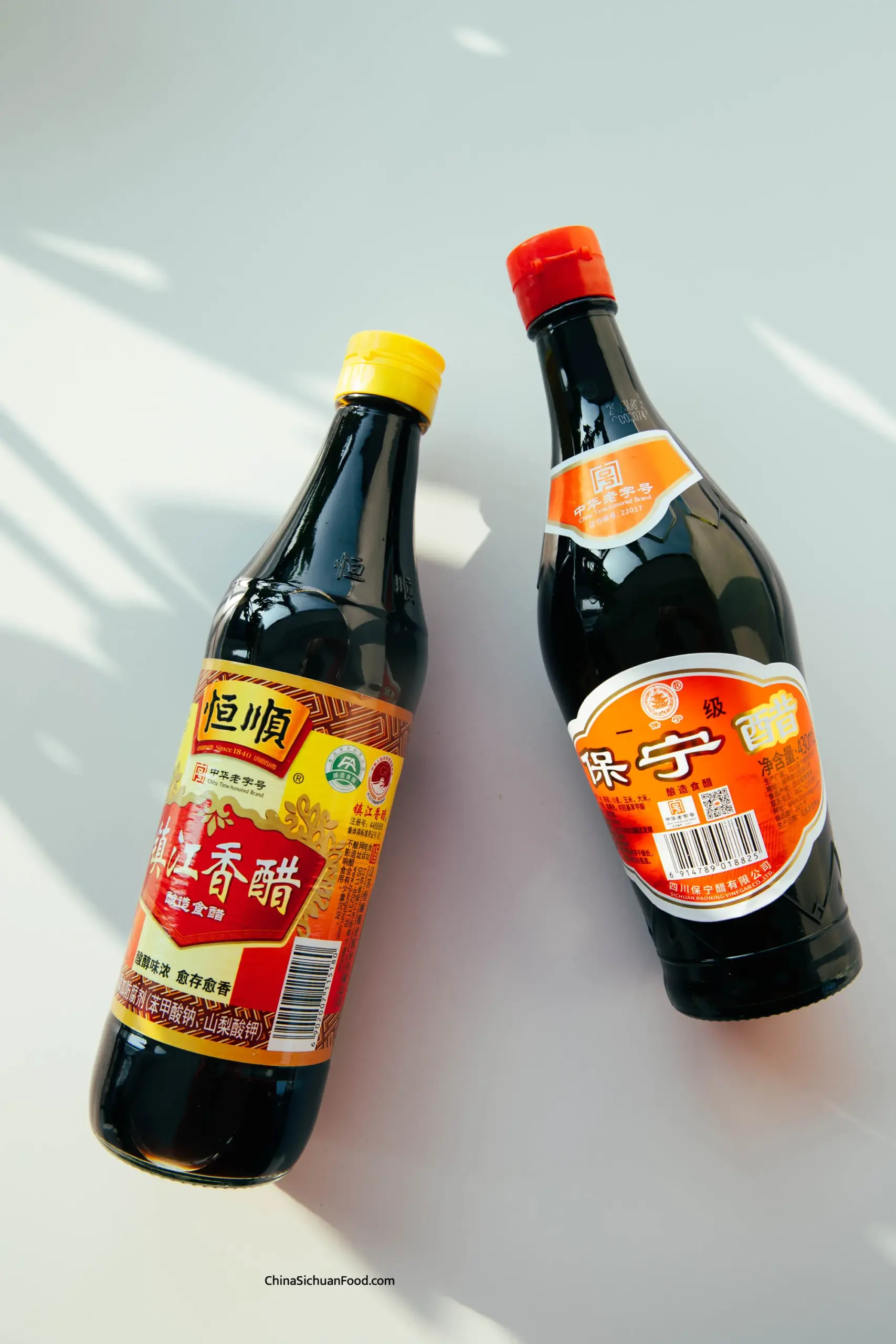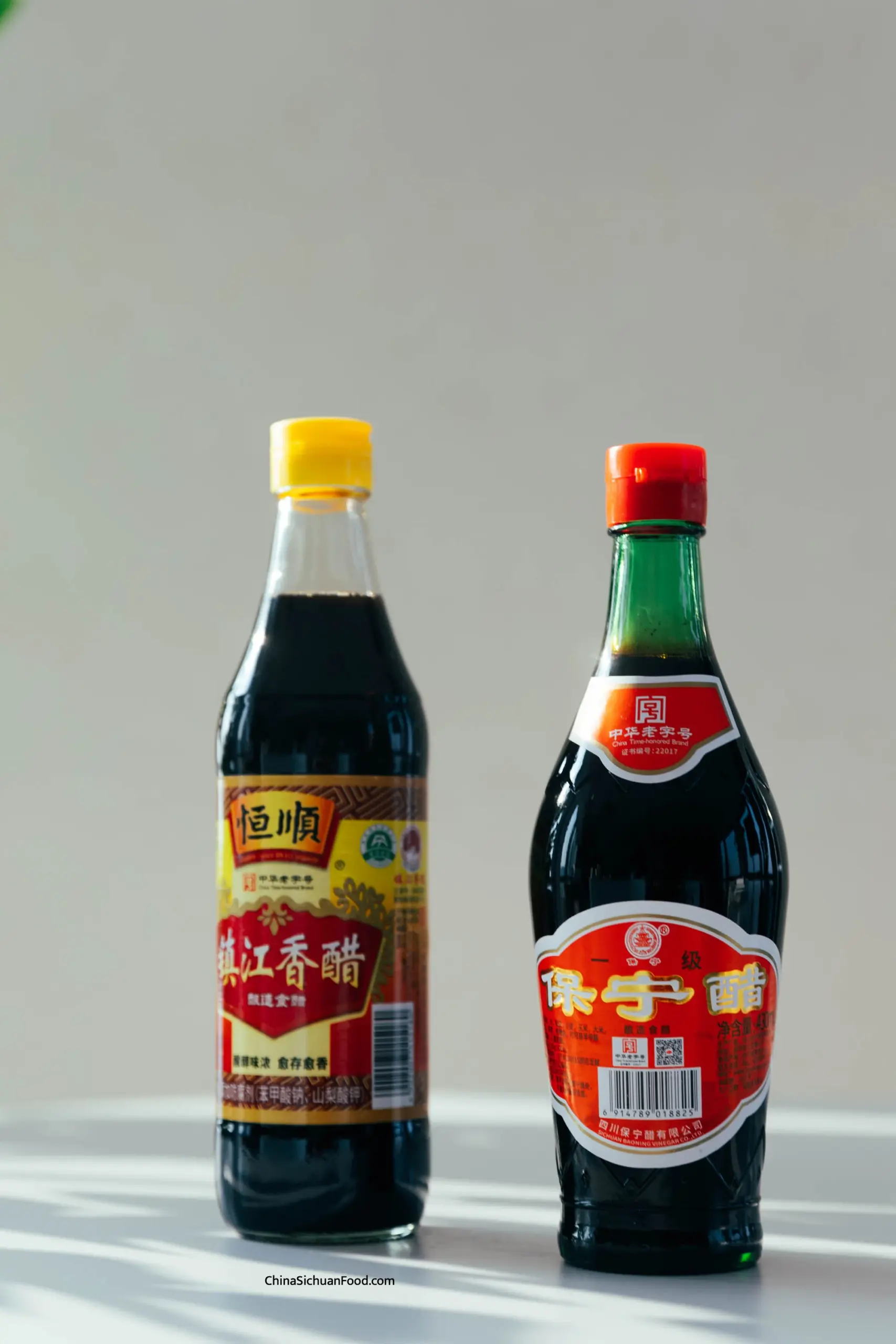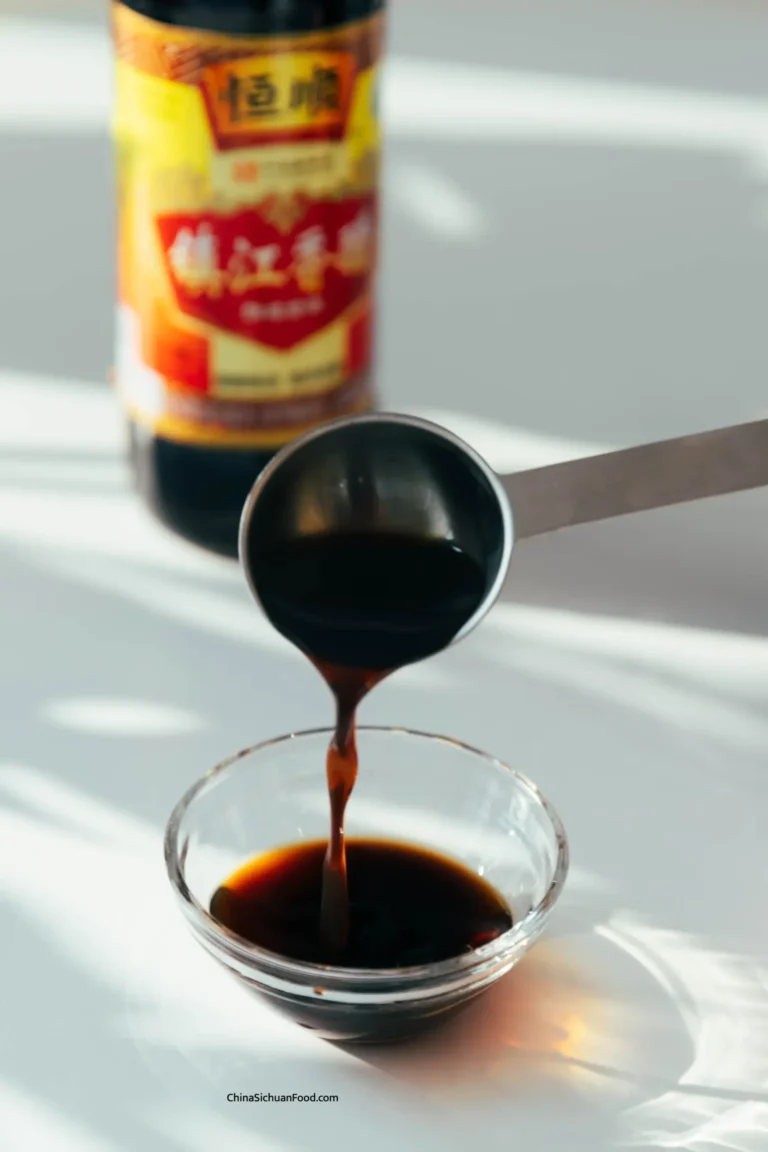[ad_1]
Vinegar is one of the basic elements that every kitchen needs. Its acidity balances the flavors in different dishes. But have you heard before? Chinese black vinegar? It’s a little different than regular white vinegar. Keep reading to learn why and how to use it in the kitchen, plus easy alternatives. It brings the complex and unique tang taste that contributes so much to many famous Chinese dishes.

What is Chinese black vinegar?
Chinese black vinegar (香醋 or 黑醋) has been used in China since about 480 BC. There are four main types of Chinese black vinegar available today, but the most popular is… Chinkiang (Zhenjiang) vinegar.. Two main ingredients are glutinous rice and barley.
In mainland China, some other brans are also very popular.
- Shanxi ripe vinegar. Shanxi vinegar is commonly used in northern China and is made from sorghum, barley and wheat bran. Because it is aged for up to five years, it has a more robust smoky flavour.
- Sichuan black vinegar. The most common byproduct is Sichuan Baoning vinegar, which is made from wheat bran and traditional medicinal herbs and spices. It is usually up to a year old.
- Fujian Yongchun vinegar. Made from glutinous rice, it is infused with a unique fungus to turn it red.
In Japan and Korea, their versions of black vinegar are made from brown rice and have a more nutty taste. while,
Taiwanese black vinegar is similar to Worcestershire sauce in that the vinegar is mixed with other ingredients. This gives it a fruity flavor compared to black vinegar.


A magical but long process
There is a two-step fermentation process to make black vinegar. He’s aged at least traditionally six months (Sometimes up to five yearsAs we mentioned) in clay pots. The umami flavor and deep color are due to… The interaction of carbohydrates in rice or grains with amino acids. The longer fermentation continues, the better flavor will be created. So it’s a gift of time.
The unique compound tastes like Chinese black vinegar
Chinese black vinegar has a deep, complex flavor that you won’t find in other types of vinegar. that it Less flavorful than rice vinegar and less sweet than balsamic vinegar. But it also has more umami flavor than regular vinegar. Think of it as a full-bodied, aromatic blend of rich texture and sweet, smoky malt flavors.
Health benefits
We believe that black vinegar has benefits for our body from the perspective of traditional Chinese medicine.
- He. She Fights fatigue Because it contains amino acids.
- maybe Help with weight loss By increasing this feeling of fullness and reducing your appetite.
- It can help people with diabetes get better control High blood sugar.
Uses How to use Chinese black vinegar in cooking
As a very common ingredient in Chinese cooking, we have many ways to use Chinese black vinegar.
- As a dipping sauce. In northern China, they often use Shanxi vinegar with a pinch of ginger as a dipping sauce for soup dumplings.
- As a pickle. Black vinegar is often used to season, bast, or braise dishes. I use it for all types of meat, including beef, pork, fish, and chicken. It is excellent for braised pork ribs, marinated pork chops, marinated and roasted vegetables, or braised fish (hongchow yu) and hongchow pork belly.
- As glaze. Sauté it on the stove with sugar and soy sauce to make a glaze for vegetables or tofu.
- In bandages. Make any salad dressing or cold appetizer better with some black vinegar. It is popularly used in Sala wooden earDrbut it would also be great to add a touch of flavor to a traditional chicken salad or Chinese potato salad.
- In fried sauces. Add acidity to any stir fry with black vinegar. It goes perfectly with soy sauce. It can create a beautiful sweet or sour taste or hot and sour taste in stir-fried sauces such as sweet and sour sauce.
Best brands
The most popular brand is Gold Plum Chinkiang Vinegar. Fortunately, it’s very cheap, so you have no excuses not to try it! Depending on where you are, you’ll find it in most Asian supermarkets.


The best alternatives to Chinese black vinegar
Well, this is the most common question. You may find many recipes, especially authentic Chinese ones, that call for Chinese black vinegar. If you do not have it, try using the following alternatives. We also calculated a very basic ratio.
Balsamic vinegar
These vinegars are often compared to each other. But they are two separate products, even though they look similar and are both old. Black vinegar is less sweet and more flavorful than balsamic vinegar.
If you substitute it, I recommend reducing the sweetness in the recipe elsewhere if possible, because balsamic is sweeter than black vinegar. Otherwise this is a Swap 1:1 respectively.
Coconut aminos sauce
This is a naturally vegan and gluten-free sauce derived from coconut sap. It has a delicious flavor similar to black vinegar, so I like to use it as a substitute. As for the ratio Use 2 teaspoons of coconut amino sauce for every teaspoon of black vinegar.
Rice vinegar
Chinese black vinegar is made from rice, so white rice vinegar or rice wine vinegar are great alternatives. However, black vinegar is not as pungent as these options. So, if you make the switch, I recommend adding a little sugar or honey to the recipe to balance the acidity and replicate the flavor of black vinegar.
Barley vinegar
Malt vinegar is usually served with fish and chips. But since black vinegar is made from barley, it’s another good alternative. Again, I recommend adding a little sugar and honey to add some sweetness.
Worcestershire sauce
Worcestershire sauce and Chinese black vinegar look like twins. They also have a very similar flavor profile. So you can do it easily 1:1 Swap with these products.
Sherry vinegar
Sherry vinegar doesn’t have the same delicious, complex flavor as black vinegar, but it brings the same sweetness. So it is another popular alternative. Taste-test when using sherry vinegar, as it is milder than black vinegar, so you may need to add more.
As for the best alternative to Chinese black vinegar, use what you have on hand. Any of these options are great trade-offs. Feel free to combine more than one option as well:
- 1 part white vinegar, 1 part rice wine vinegar, and a pinch of sugar.
- 1.5 parts rice wine vinegar or malt vinegar with 1/2 part balsamic vinegar.
- 1 part balsamic vinegar with a little Worcestershire sauce or soy sauce.
We hope this comprehensive guide to Chinese black vinegar has taught you something new and that you’re ready to start cooking with it. Whether you try it as a marinade or a dumpling sauce, I bet you’ll be addicted to it after just one bite!
[ad_2]

